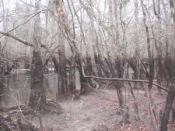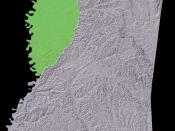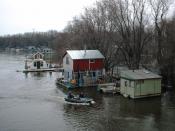Introduction
Within the conceptual framework of this research, I would like to elaborate on causes and consequences of floods. There are always floods somewhere in the world. They threat big communities with millions of people, their lives and properties. Big floods always draw international attention. In order to support my discussion about floods with concrete examples, I will talk about causes and consequences of flood using Mississippi River basin.
The flood plain
A river's flood plain is central to any discussion of floods. A broad, nearly flat landform consisting of stream-deposited sediment, the flood plain is inundated by flows in excess of channel capacity (that is, a flood). The flood plain is higher along the edge of the river, built up by deposition of sediment from water overflowing stream banks. As the water leaves the channel, it is abruptly slowed by the reduced gradient and friction of the flood plain.
(Ward 1978)
The deposition of sediment along the channel banks produces natural levees which appear as slightly higher ground between the river and its flood plain. The natural levee slopes, often imperceptibly, away from the river so that the lower and less well-drained portion of the flood plain often has standing water, known as a backswamp. The flood plain, including the back-swamp, is extremely important in the natural process of flooding. "If a flood is defined as flow in excess of channel capacity, then the flood plain's role is to store the excess flow until it can be accommodated by the channel." (Wundram 1993) Although some flood water evaporates, most of it flows directly back into the channel or rejoins the channel indirectly by groundwater flow. The flood plain is instrumental in flood control by storing - and slowing - excess water.
Mississippi River
In 1993 the Mississippi River...


